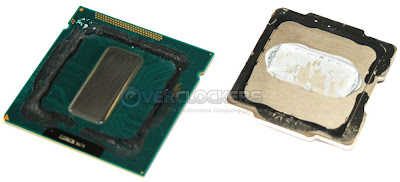As we said before, SOI is a very resourceful concept and can show amazing improvements in the right conditions. Every foundry needs a SHP (Super High Performance) manufacturing line and GlobalFoundries wants this line to be based on SOI.
Compared to the bulk process, enhancing your producing line with SOI technology and using SOI wafers will get you reduced leakage, reduced power consumption and will increase the highest achievable clock frequency of your design.
So why doesn’t everybody use SOI? Well, because it involves some extra money and work when compared to the bulk process.
If an IC designer develops an architecture and tailors the design of the bulk process, it has quite a good number of FABs to choose from. He can take his chip to many FABs using the bulk process and negotiate the best price.
If he wants to use SOI, he must modify his design for the SOI concept. Clearly, he will get all the advantages of a cooler chip and a higher working frequency, but he can only send his design to FABs that have a SOI manufacturing line. And, of course, the IC design company must also pay IBM some money as SOI is now IBM’s child.
Therefore, SOI means extra work, extra money for
IBM, other wafers, probably more expensive than a bulk wafer, and less FABs to choose from.
Don’t get the wrong idea and imagine that SOI is a bad thing. If you tailor your design for SOI and need all the extra power reduction and frequency increase to show a product that’s better than the competition, like
AMD showing a 4,5 GHz Piledriver demolishing Ivy Bridge, going for SOI would probably be the best move.
Why let your product appear less powerful than the competition when, by using
SOI, you can make it faster and cooler?
AMD went for SOI since 2003 and, since they were using their own FAB, they never worried about finding a FAB with an advanced SOI process to make the chips for them.
Now, GlobalFoundries has the FAB and AMD is just an IC design company. There are two points of view here.
From GlobalFoundries’ point of view, having a bulk process is suitable for a foundry manufacturing many different designs for different IC design companies.
This is just like what TSMC does. But this doesn’t mean GlobalFoundries doesn’t want to have something to keep them “on the edge”.
TSMC never bothered with SOI. The bulk of their business is 65 nm and 40 nm technology and the top-of-the-line “on the edge” technology that they use to impress their clients is their 28 nm process.
This is not a bad approach, but get this, even if TSMC has 28 nm in volume production since last year, their 28 nm quantities only accounted for 2% of the foundry’s entire manufacturing volume.
Things are quite different at GlobalFoundries. They are manufacturing a lot of 32 nm chips and they are using 32 nm with SOI to impress their clients. It’s not just that 32 nm is more advanced than TSMC’s 40 nm, but GlobalFoundries also has SOI that adds lots of advantages.
To better address the many bulk clients out there, GlobalFoundries will go bulk for the 28 nm process. But they’ll put a lot of work into their 20 nm process and imbue it with Fully-Depleted SOI.
FD-SOI does wonders for the 28 nm process already so using it for the 20 nm process with likely put GlobalFoundires in a significant advantage over Intel’s 22 nm FinFETS.
STMicro showed a
whitepaper on the FD-SOI experiments with their own bulk 28 nm process and the results were amazing.
Their 28nm FD-SOI technology performance is 61 percent higher than comparable bulk technology when fueled at 1 volt. The advantage increases if you have designs that require a lower power voltage.
If your chip can down-clock towards a 0.6V VDD (Voltage Drain Drain) it will show a 550 percent improvement in leakage current.
Therefore, a chip or physical block not requiring leading-edge performances and (clocked lower when in idle) will save up to 50% power when implemented in 28FD vs. a 28LP implementation.
From AMD’s point of view, they’d like their next step to be 28 nm bulk, as they might need more manufacturing capacity than what GlobalFoundries may have to offer.
If they have a design for the 28 nm bulk process, they can always buy some more capacity from TSMC.
An SOI design wouldn’t get manufactured at TSMC, as TSMC doesn’t have SOI product lines.
With their next desktop and server CPUs based on the “
Steamroller” architecture, they might want to have SOI available for better power consumption, less leakage and higher frequencies.
These chips will be more expensive and will have a lower volume than AMD’s current APUs that need to be cheap and come in great volumes.
GlobalFoundires will do their best to offer a cheap 28 nm bulk process with high volumes and will also work on FD-SOI for their 20 nm step so that they’ll have something to offer to their demanding clients such as AMD.
Soitec says FD-SOI is so good that it alone could help the 28 nm designs get 30 to 40 percent better results. But the industry is moving forward and it seems that AMD and GlobalFoundries both believe they need smaller transistors and more chips on a wafer.
If they can add the FD-SOI advantages to that 20 nm process in the future, they will most likely go for FD-SOI, but, for now, it seems 28 nm bulk is the way to go for both companies.



 5/03/2012 08:59:00 PM
5/03/2012 08:59:00 PM
 dannzfay
dannzfay




















































